C++的List
List的使用
构造
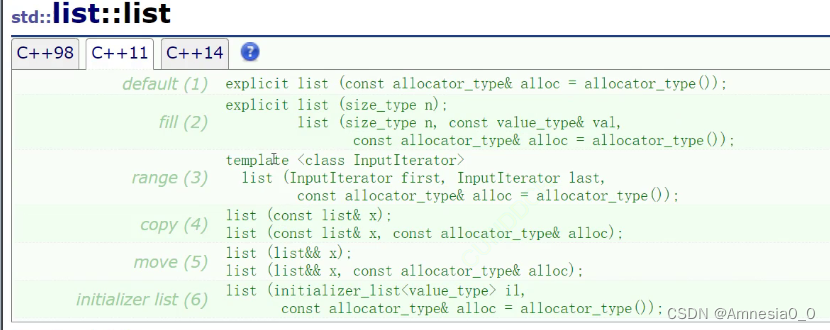
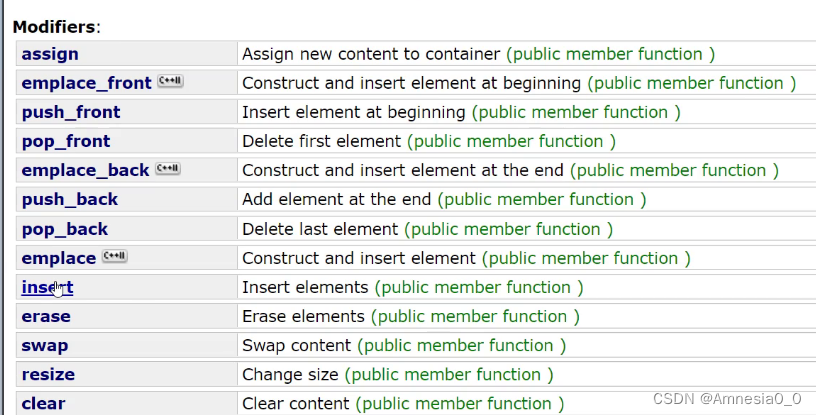
与vector的区别
与vector的区别在于不支持 [ ]
由于链表的物理结构不连续,所以只能用迭代器访问
vector可以排序,list不能排序(因为快排的底层需要随机迭代器,而链表是双向迭代器)
(算法库里的排序不支持)(需要单独的排序)
list存在vector不支持的功能

链表的排序
vector可以用算法库里的sort排序,list不能用算法库里的sort排序排序(因为快排的底层需要随机迭代器,而链表是双向迭代器)
(算法库里的排序不支持)(需要单独的排序)
链表的排序效率要远低于算法库里的快排,因此链表的sort很少使用
即使将list拷贝会vector排序再拷贝回来,效率依旧大于直接在list中排序
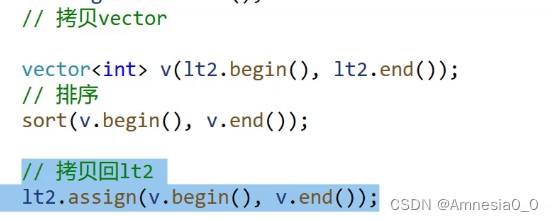
升序
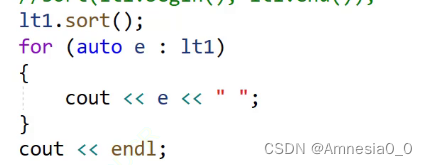
降序
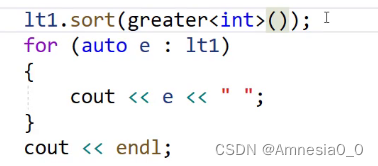
去重(unique)
去除多个重复的数据,每个值只留一个
但是去重有一个前提,需要先排序,否则去不全

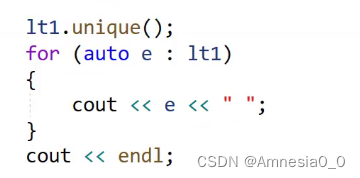
迭代器访问链表
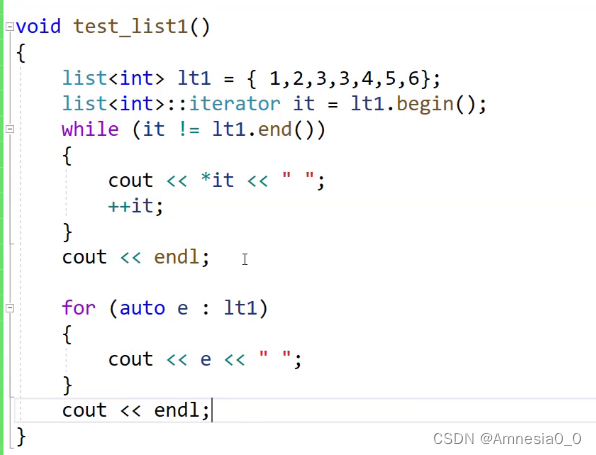
list的剪切
将一个链表的内容转移(剪切)到另一个链表

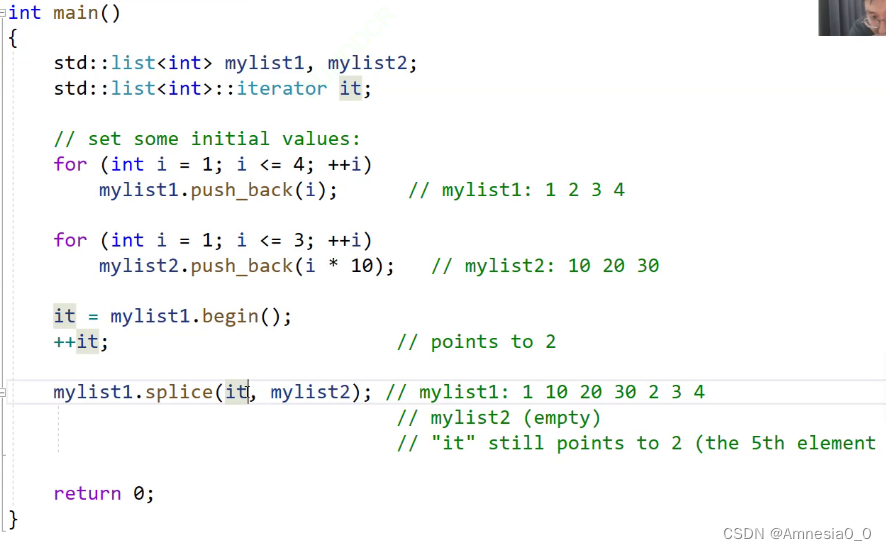
也可以自己剪切自己,来把某个节点向前或后移动
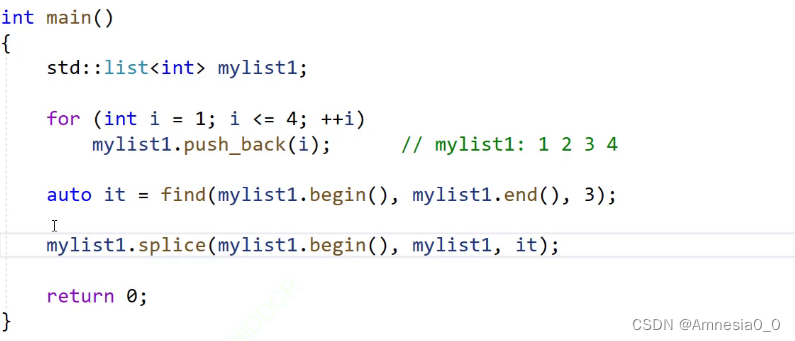
list变为"3 1 2 4"
List的实现(双向带头循环)
链表基础结构
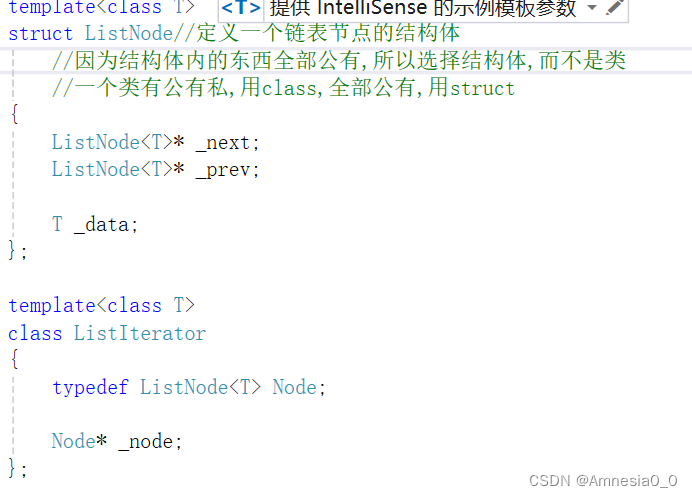
_head是双向带头循环链表的哨兵位(不存储有效数据)
list的迭代器
与vector不同,list在物理上是不连续的
因此不能像vector一样

因为这样++iterator不能得到下一个节点
因此可以选择建立一个类来进行封装
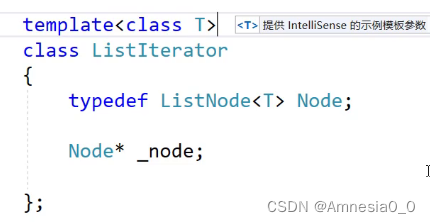
可以在该类中重载 " ++ " 和 " * "等运算符
是迭代器可以实现作用
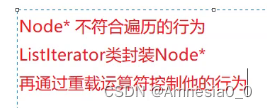
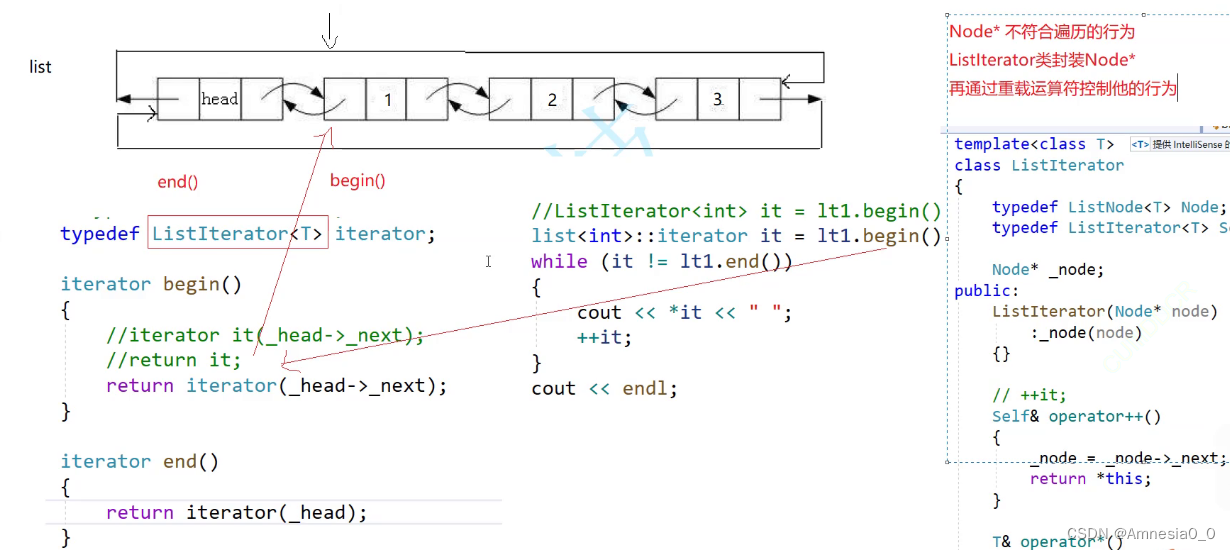
但是注意不需要重载 " + "和 " - " ,因为他们的效率很低
同时,迭代器类不需要写析构函数
因为节点不属于迭代器,只是需要用迭代器访问
节点是属于链表的
也不需要写拷贝构造(深拷贝),默认生成的浅拷贝就够了
因为没有写析构,所以也不存在析构两次的问题
->的重载
迭代器内还重载了 " -> "运算符
eg.
对于自定义类型
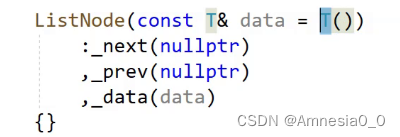
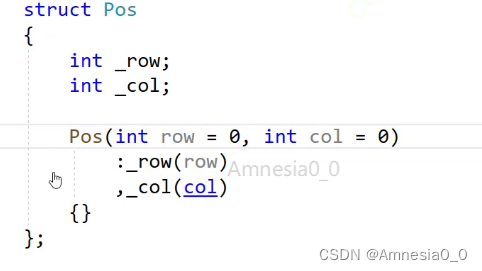
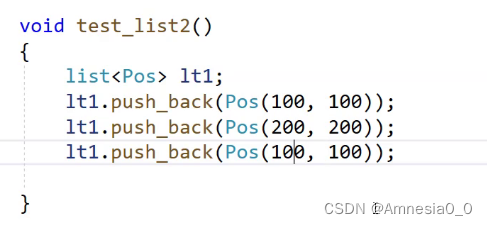
想要进行输出,又没有重载>>符号
方法一
比较原始的方法:

方法二
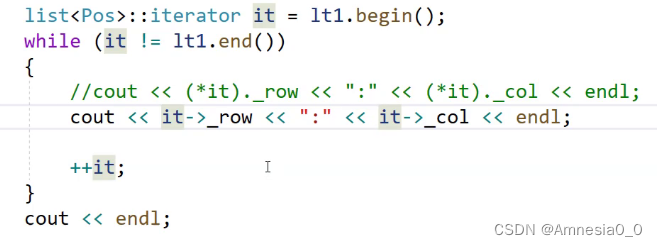
这里就是重载了 " -> "符号
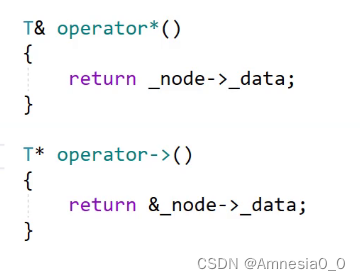
从逻辑上讲
方法2应该有两个->,但是为了代码的可读性,省略了一个->

const迭代器

采用引用传参一般会给参数加const,就产生了const迭代器
但是注意

所以需要单独写一个类,让迭代器可以修改,但它指向的内容不能修改(控制返回值)
该类与之前写的迭代器的类非常相似,唯一的区别就是operator* 和operator->的返回值不同
迭代器不能修改的核心行为是operator* 和operator->
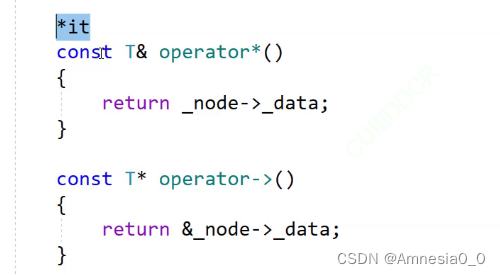
控制operator* 和operator->的返回值,从而达成不能修改的目的
但是,以上两个类重复度很高,重写一个类过于浪费
因此可以采取新添加两个模板参数

写一个类模板,传不同的模板参数,来控制返回值
这样相当于利用模板生成了两个类,交给编译器来完成
提高了开发效率
插入insert

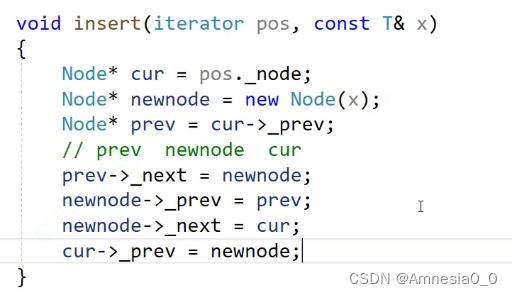
链表里的insert不存在迭代器失效的问题,因为它不存在扩容
pos指向的位置也不会变
删除erase
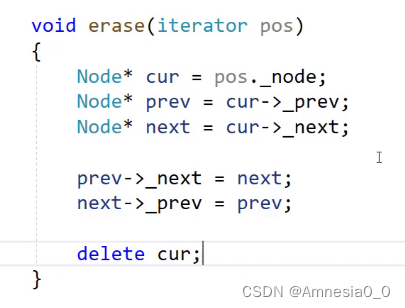
erase存在迭代器失效的问题
是野指针失效
拷贝
默认的浅拷贝存在一定的问题
eg.
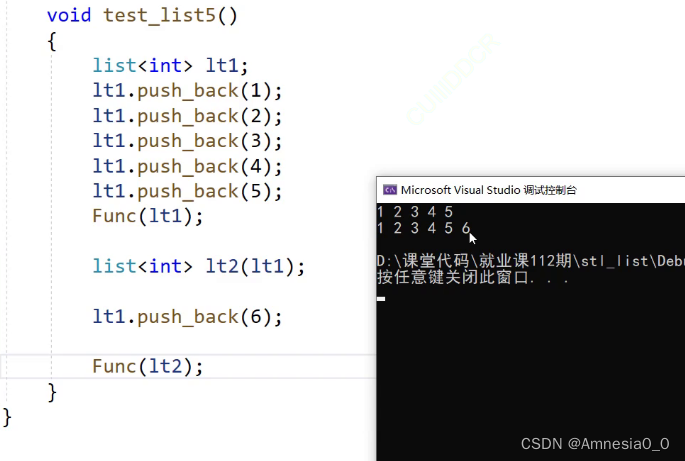
因为浅拷贝,指向同一块空间,会相互影响,析构两次
析构函数
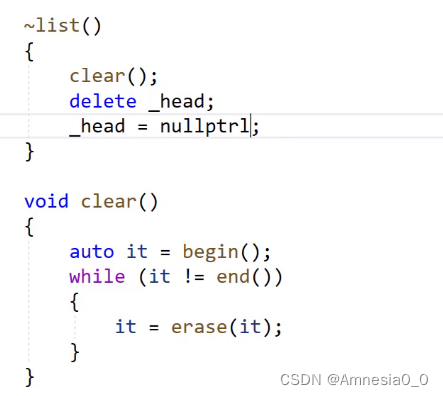
这里用clear()清除数据
深拷贝
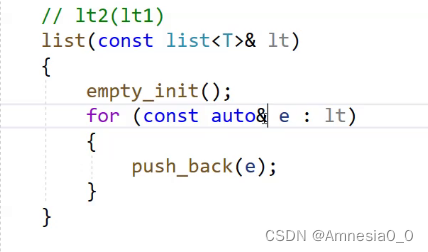
在范围for时,如果不确定遍历的类型,最好加引用&
赋值
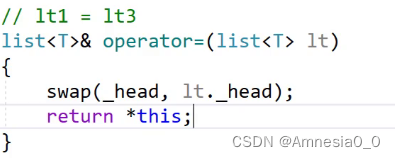
直接交换两个链表的头节点就行
因为传入的参数不是引用,lt是lt3的临时拷贝,使用完后就会释放
交换头节点后,不仅实现了赋值,还顺便将原链表析构了
initializer_list
为了支持{ }赋值,需要写一个initializer_list
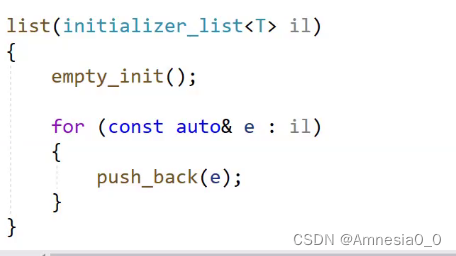
参数不用加引用&
因为initializer_list直接用{ }初始化,里面是常量数组
里面是直接用指针指向常量数组的开始和结束


模拟实现
#pragma once
#include <iostream>
using namespace std;
namespace bit
{template<class T>struct ListNode//定义一个链表节点的结构体//因为结构体内的东西全部公有,所以选择结构体,而不是类//一个类有公有私,用class,全部公有,用struct{ListNode<T>* _next;ListNode<T>* _prev;//结构体指针后加<T>模板,否则结构体指针就无法指向该类型的数据T _data;ListNode(const T& data = T())//初始化: _next(nullptr), _prev(nullptr), _data(data)//初始化列表{}};template<class T, class Ref, class Ptr>class ListIterator{typedef ListNode<T> Node;typedef ListIterator<T, Ref, Ptr> Self;Node* _node;public://++itListIterator(Node* node):_node(node){}Self& operator++()//前置{_node = _node->_next;return *this;}Self& operator--(){_node = _node->_prev;return *this;}Self operator++(int)//后置{Self tmp = *this;_node = _node->_next;return tmp;}Self operator--(int){Self tmp = *this;_node = _node->_prev;return tmp;}Ref operator*(){return _node->_data;}Ptr operator->(){return &_node->_data;}bool operator!=(const Self& it){return _node != it._node;}};//template<class T>//class ListConstIterator//{// typedef ListNode<T> Node;// typedef ListConstIterator<T> Self;// Node* _node;//public:// //++it// ListIterator(Node* node)// :_node(node)// {}// Self& operator++()//前置// {// _node = _node->_next;// return *this;// }// Self& operator--()// {// _node = _node->_prev;// return *this;// }// Self operator++(int)//后置// {// Self tmp = *this;// _node = _node->_next;// return tmp;// }// Self operator--(int)// {// Self tmp = *this;// _node = _node->_prev;// return tmp;// }// const T& operator*()// {// return _node->_data;// }// const T* operator->()// {// return &_node->_data;// }// bool operator!=(const Self& it)// {// return _node != it._node;// }//};template<class T>class list//链表{typedef ListNode<T> Node;public:typedef ListIterator<T, T&, T*> iterator;typedef ListIterator<T, const T&,const T*> const_iterator;/* typedef ListConstIterator<T> const_iterator;*/iterator begin(){return iterator(_head->_next);//传入匿名对象构造一个iterator类型的变量来返回}iterator end(){return iterator(_head);}void empty_init(){_head = new Node();_head->_next = _head;_head->_prev = _head;}list(){/*_head = new Node(T());_head->_next = _head;_head->_prev = _head;*/empty_init();} list(initializer_list<T> il){for (const auto& e : il){push_back(e);}}//lt2(lt1)list(const list<T>& It)//深拷贝构造{empty_init();for (const auto& e : lt){push_back(e);}}//lt1 = lt3list<T>& operator=(list<T> lt){swap(_head, lt._head);return *this;}~list(){clear();delete _head;_head = nullptr;}void clear(){auto it = begin();while (it != end()){it = erase(it);}}void push_back(const T& x){Node* newnode = new Node(x);Node* tail = _head->_prev;tail->_next = newnode;newnode->_prev = tail;newnode->_next = _head;_head->_prev = newnode;}void insert(iterator pos, const T& x){Node* cur = pos._node;Node* newnode = new Node(x);Node* prev = cur->_prev;prev->_next = newnode;newnode->_prev = prev;newnode->_next = cur;cur->_prev = newnode;return iterator(newnode);}void erase(iterator pos){Node* cur = pos._node;Node* prev = cur->_prev;Node* next = cur->_next;prev->_next = next;next->_prev = prev;delete cur;return iterator(next);}private:Node* _head;};void test_list1(){list<int> It1;It1.push_back(1);It1.push_back(2);It1.push_back(3);It1.push_back(4);list<int>::iterator it = It1.begin();while (it != It1.end()){*it += 10;cout << *it << " ";++it;}cout << endl;}
}

